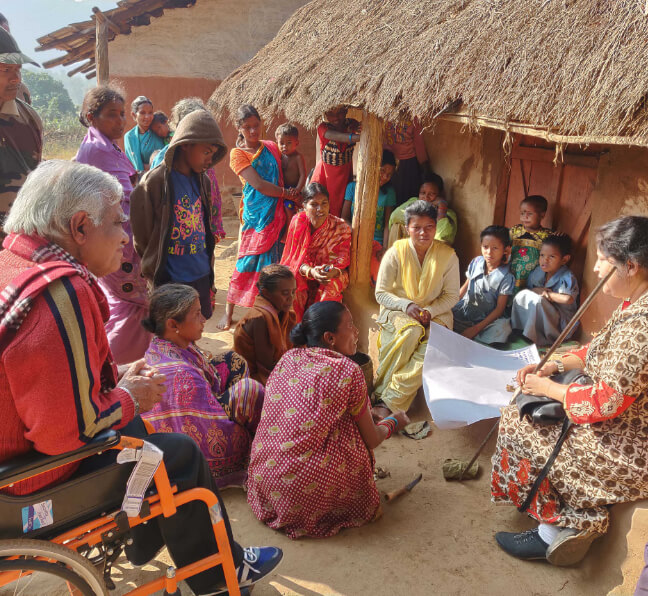IBRAD Working towards SDG 5: Achieve gender equality and empower all women and girls…
” Women and girls, everywhere, must have equal rights and opportunity, and be able to live free of violence and discrimination. Women’s equality and empowerment are one of the 17 Sustainable Development Goals, but also integral to all dimensions of inclusive and sustainable development. In short, all the SDGs depend on the achievement of Goal 5.”
http://www.unwomen.org/en/news/in-focus/women-and-the-sdgs/sdg-5-gender-equality
-
Tribal Women Empowerment In The Context of Natural Resource Management
Tribal women play an important role in the preservation of natural resources, particularly seeds ( SDG -15) and medicinal plants to make the family healthy ( SDG-3). The women inherit the ancestral knowledge and pass to the children as a part of their cultural practices. But lack of educational opportunities, ( SDG-4), exposure to the modern world, and technology they are deprived of individual development. Therefore women’s empowerment can help better socialization for overcome poverty ( SDG-2) sustainable development,
Creating an enabling environment and equal opportunities for women will ensure women empowerment and change in societal attitude. The training of the tribal women in non-destructive NTFP harvesting, value addition, marketing, sustainable agriculture, and organic farming will widen the opportunity for sustainable livelihood and instil self-esteem.
Training on entrepreneurship and skill development and mobilizing the community for local employment and /livelihood opportunities to school drop-outs, adolescent girls, housewives, and rural youth will further facilitate social change.

-
The Process initiated by IBRAD to overcome hindrances to Empowerment of Tribal Women:
Many of tribal women are illiterate. Many of the tribal women do not know the official language of the state which creates a big hindrance to express their view in the meeting of local affairs. Tribal women are not aware of the collective rights of their lands and forests recourses, availability of the resources may be obtained to maintain the family’s livelihood As a core principle for FAO’s Policy on Indigenous and Tribal Peoples and it is a guiding principle mainstreamed in all the activities of the Organization.

-
Indicators of Women Empowerment:
The empowerment process is difficult to measure quantitatively. Various authors have used education, work participation, and exposure to mass media, the means or sources by which women are expected to develop decision-making authority, greater freedom of movement, autonomy, and attitudinal changes in favour of gender equality, as indicators to measure empowerment.
Jayanti participating at the TV panel discussion.
Training and Education is an essential foundation for all social, economic and cultural development (Sen, 1994) that enhances the human capital and economic prospects of a country (UNFPA, 2005).
Investment in women’s education results in an improved status through improved economic prospects, greater decision-making authority..
Control over resources, exposure to the modern world, husband-wife communication, and self- reliance in old age, and reduced restrictions on physical mobility (Moser, 1998).
A mother’s education is linked to better reproductive health and reduction in young children’s mortality rates (Jejeebhoy, 1996; UNFPA, 2005).
Education is also likely to enhance women’s economic independence by equipping them with the skills necessary to take advantage of paid employment opportunities
Labour force participation and exposure visit not only gives women an opportunity to earn income but also exposes them to the outside world.



